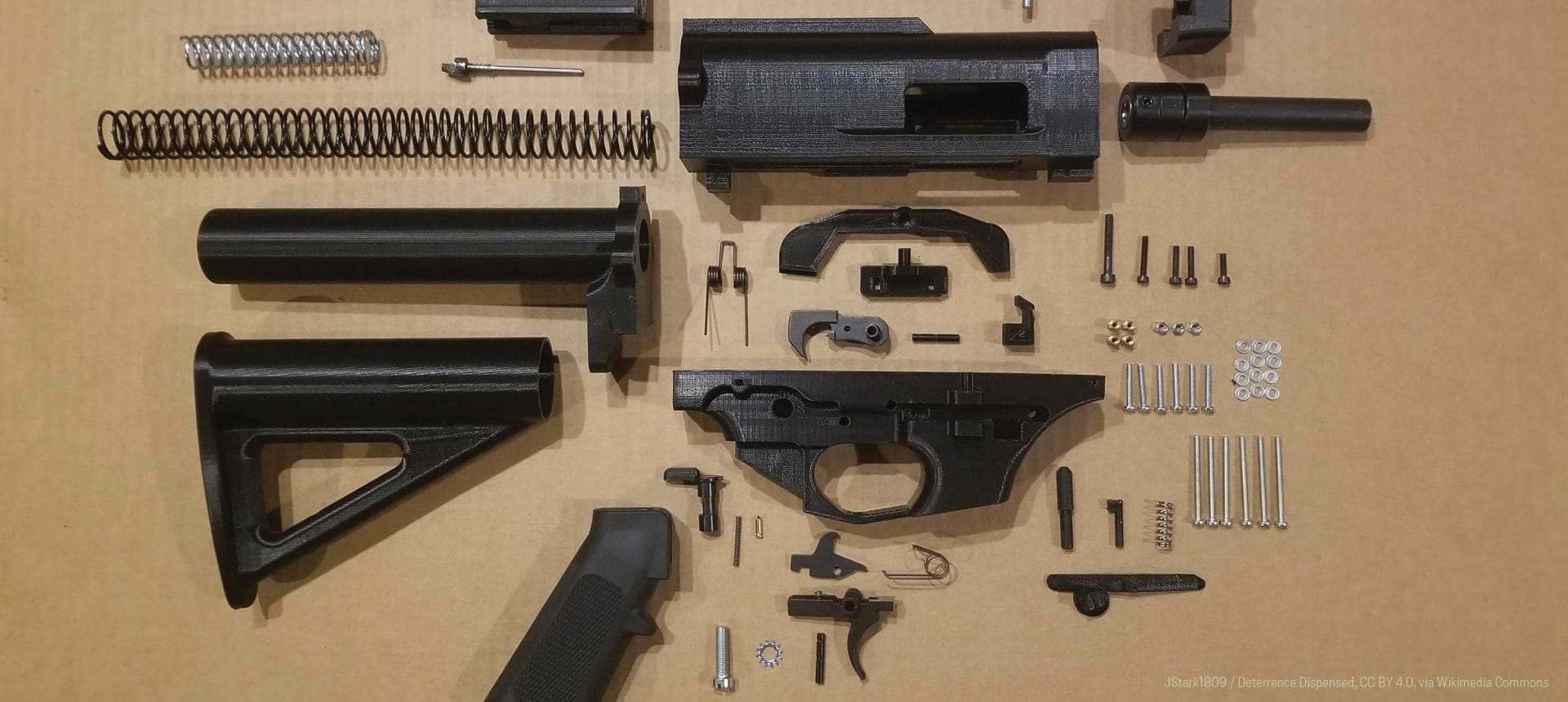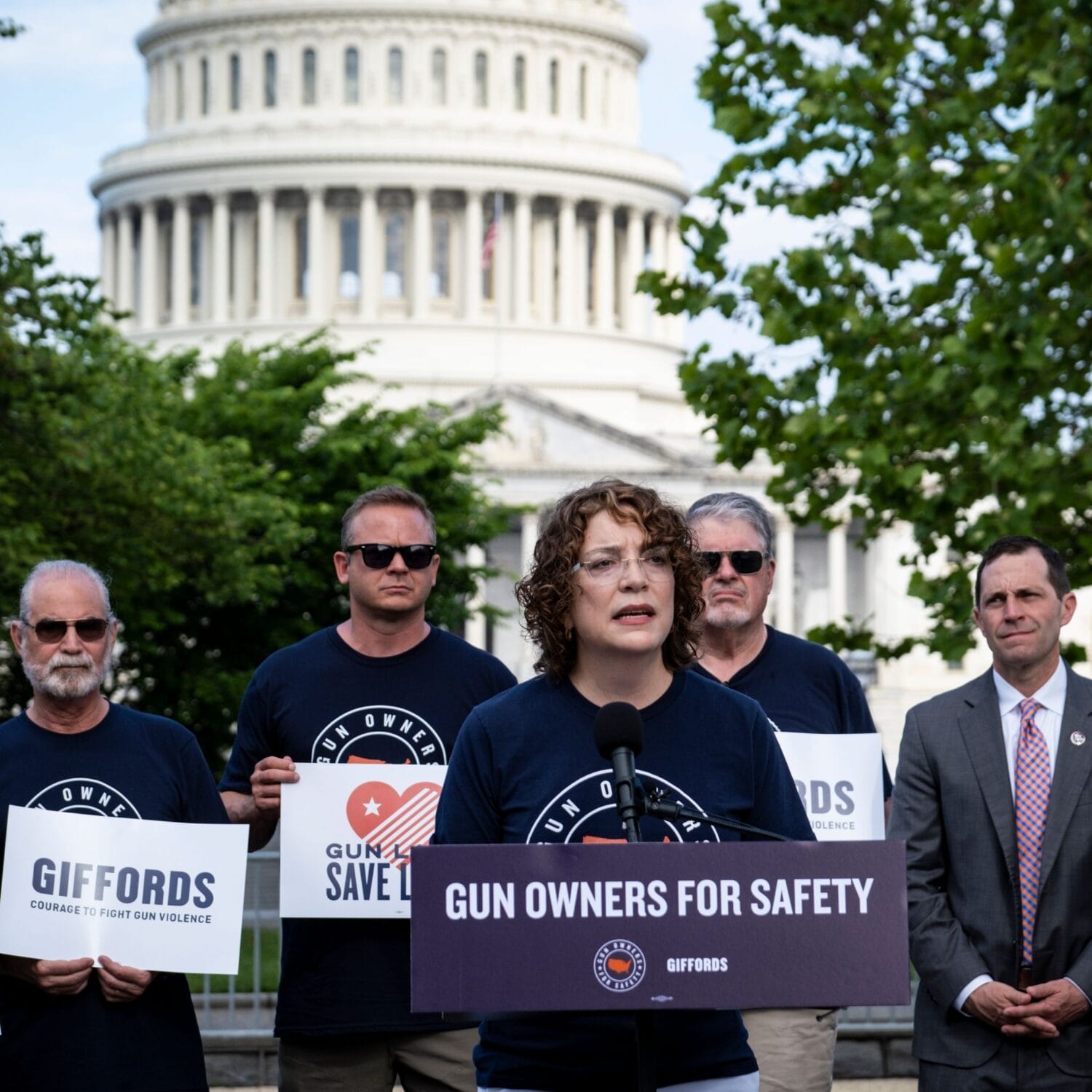
Ghost Gun Blueprints Are Going Viral. That’s Really, Really Bad.
Ghost gun kits have long functioned as “lethal Lego sets.” 3D printers are now making them even easier to assemble—and with fewer restrictions.
Homemade guns have never been easier to create—or more lethal—than they are right now.
We’ve all witnessed the exploding market of ghost guns that seek to intentionally circumvent state and federal gun safety laws. The ghost gun industry has developed gun build kits and related products that allow untrained amateurs to quickly and easily assemble their own firearms from unregulated parts—including frames and receivers that are left just unfinished enough to escape the definition of “firearm” under state or federal gun safety laws.
Typically assembled and sold without traceable serial numbers, these ghost guns are now often produced largely or even entirely from plastic—possibly rendering them undetectable. As technology has advanced, it’s become possible to use a 3D printer to produce a functioning weapon.
Ghost guns, including those made with 3D printers, are great for far-right extremists and those committing crimes for the same reason they’re bad for public safety: They can be accessed without a background check and it’s much harder to identify and trace these guns when they’re used in a crime.
In fact, they’re becoming such a widespread problem that the Supreme Court has taken on a case this term to determine whether kits for assembling ghost guns will be regulated like the deadly firearms they are. The justices heard oral arguments in the case, Garland v. VanDerStok, last week, and while we’ll have to wait until the spring to find out their decision, we know that even the Supreme Court’s own police force recognizes that ghost guns are guns—so the justices must too.
The most popular 3D-printed gun, known as the “FGC-9,” is a hybrid made primarily from 3D-printed parts combined with metal pieces fashioned from readily available parts. It’s designed so that the maker doesn’t need to purchase any pre-made firearm components at all. That’s why the FGC-9 is gaining global attention, even in countries with strict gun laws.
The New York Times recently published two articles about the growing online popularity of this 3D-printed gun and why it’s making appearances amongst extremist groups, paramilitaries, and criminal groups across the world. The Combating Terrorism Center at West Point also published a report this summer exploring the same topic. In fact, the FGC-9 is so desirable among far-right extremists in Britain that it can be considered a terrorist offense to possess or share its instruction manual—as it was in the case of a 20-year-old man from Portsmouth, who was sentenced to jail this week for this exact reason.
(And in case you were curious what the name stands for, just try to imagine what the gun’s creators think about “gun control.”)
The popularity of these “lethal Lego sets” can be explained by their easy creation and assembly. Anyone with a 3D printer, a couple hundred dollars, and some metalworking skills can make one. You don’t need a background check, a license, or any training to carry an extremely deadly weapon with you.
Ghost guns are hard to crack down on and are highly attractive to firearm traffickers precisely because there are no background checks or sale records—and the guns themselves are untraceable.
The result has been a surge of ghost guns onto our streets: ATF reports that the number of ghost guns being used in crimes has risen more than 1,000% since 2017.
Fortunately, the Biden-Harris administration has prioritized addressing this growing crisis. The ATF closed a loophole that had allowed ghost guns to disseminate by simply requiring ghost gun kits to be regulated like guns. And by signing the Bipartisan Safer Communities Act into law in 2022, President Biden expanded how many gun sellers must obtain a federal firearms license and conduct background checks and established federal statutes to clearly define and penalize trafficking and straw purchasing.
GIFFORDS has led the fight against ghost gun companies and their illegal activity in state legislatures and courts across the country. Our team has helped draft and pass ghost gun laws in 14 states and DC, making sure lawmakers continue to prioritize this dangerous issue. We’ve also sued various ghost gun manufacturers—including Polymer80, the largest ghost gun company in the country—and won, ensuring each one pays for the dangers they create.
But it’s not over yet. We’ll hear back from the Supreme Court on ATF’s rule regulating ghost guns soon enough, and meanwhile the growing availability of 3D-printed guns represents a whole new threat. Every day there are more guns like the FGC-9 entering communities without any restrictions. We need our leaders to strengthen our ghost gun laws and ensure that these weapons can’t do any more harm.
TAKE ACTION
The gun safety movement is on the march: Americans from different background are united in standing up for safer schools and communities. Join us to make your voice heard and power our next wave of victories.
GET INVOLVED




